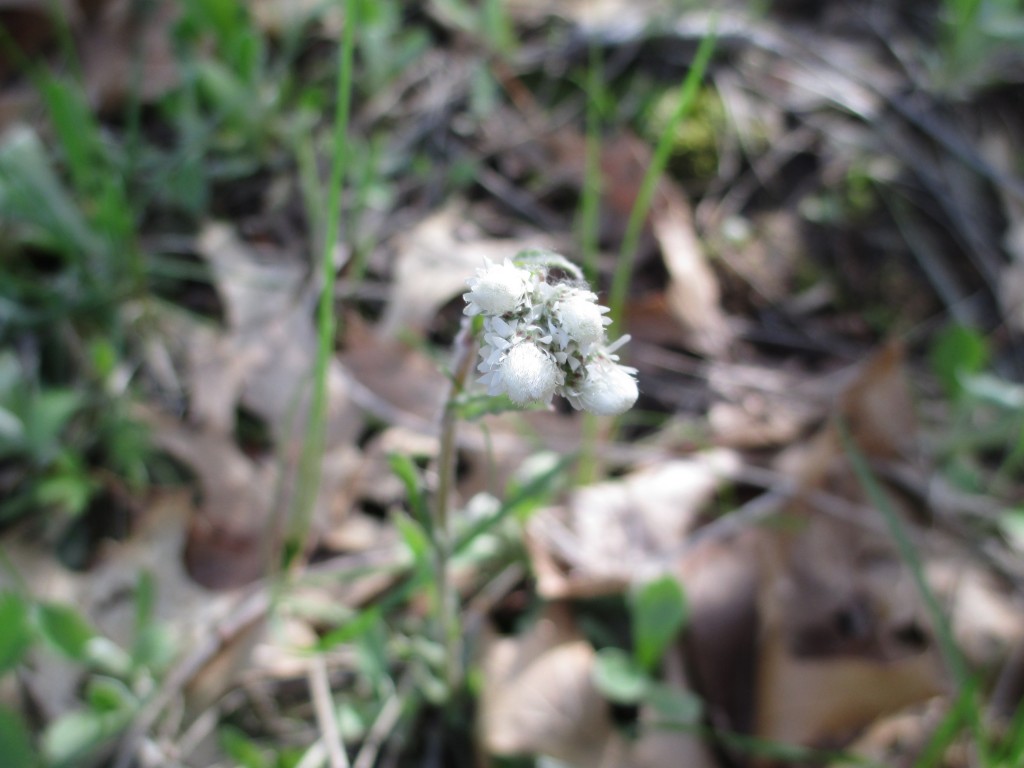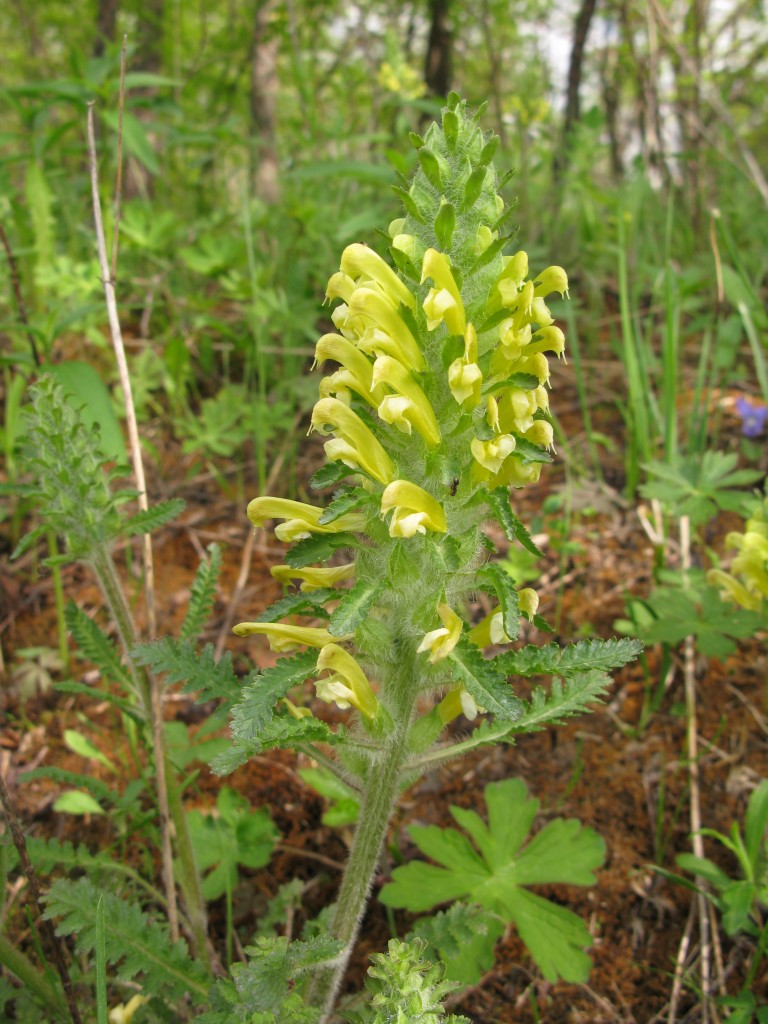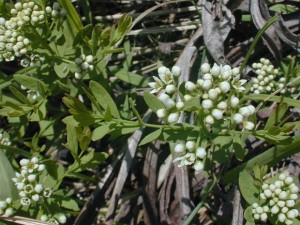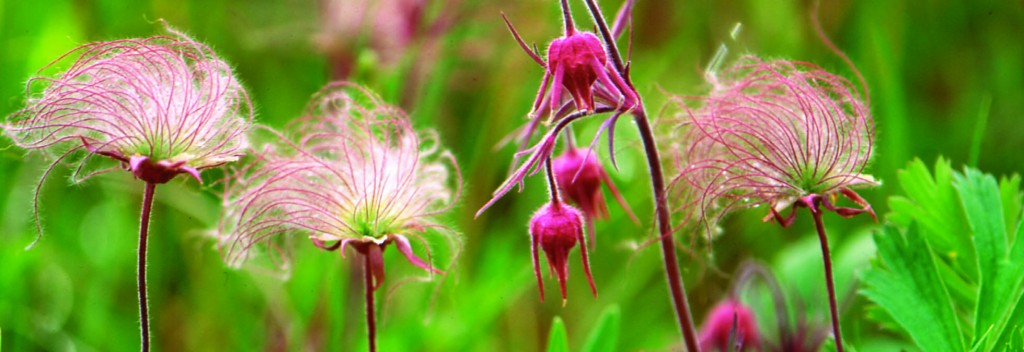What's in Bloom: May
By Catherine Wilson on May 22, 2015 in Blog
This is our third installment of “What's in Bloom.” From time to time, INHF volunteer Catherine Wilson will let you know about native plants that are in bloom around Iowa.
Soft rains and warm weather continue encouraging wild prairie and woodland flowers to emerge from their winter rest. This week we will look for Pusseytoes, Wood betony, Bastard toadflax and Prairie smoke during prairie walks.

Pusseytoes (Antennaria plantaginifolis) is a member of the daisy family and grows on clay soil, rocky ridges or on dry, disturbed woodland sites from April to June. This rosette looking flowers is also called everlasting, ladies tobacco and immortelle. The leaves and flowering stem are covered with fine white hairs that give it a gray cast.The flowering stalk rises from the center of the basal rosette. Because this flower is normally unisexual reproduction occurs by leaf-bearing stolons which allow dense colonies to form. The Meskwaki made tea from the leaves to protect new mothers from sickness and the oils and glucosides were used to aid digestion. This plant is used a a soil anchor on dry, poor soil.¹

Wood betony (Pedicularis canadensis) flowers from April to June in upland, acidic soils and woodland clearings throughout the central U.S. The plant is also called snaffles, beefsteak plant and lousewort.This perennial rises 6 to 18 inches tall in the right circumstances. Their fernlike appearance results from the long, narrow 5-inch leaves which radiate in an alternating fashion up the stem from the midrib. The leaves are silvery green and may be red wine colored in the early spring before changing to green. The upper lip of the greenish-yellow flowers darken to a purple or red color as they mature but the lower lip remains yellow. A 2/3-inch long fruit capsule contains several seeds.The Meskwaki and Prairie Potawatomi made tea by boiling the entire plant and used to it reduce swelling and tumors.The Native Amemricans also made a poultice to treat rattlesnake bites, a magic charm and even as a love charm.¹

The delicate appearance of the Bastard toadflax hides its parasitic nature as it uses nutrients from roots of many other plants, trees and shrubs.
Bastard toadflax (Comandra umbellata) blooms from April to July in dry ground, open woods or sandy soil. This wildflower grows to a foot in height and is also known as the comandra and the star toadflax. This plant is parasitic on the roots of many other plants, trees and shrubs.The small white flowers form small clusters at the tips of the flowering stems. Though the flower has no petals, its five sepals occur around the rim of the structure that later becomes a nut-like fruit. Native Americans used the fruit as a trail snack because they were small and easy to carry. They also brewed tea from the leaves or sucked on the immature flowers like a cough drop or for respiratory problems. Bastard toadflax repopulates by rhizomes and form dense stands. After the seeds mature in midsummer, the plant dies back.¹

Prairie smoke fruit has plume-like 2-inch long gray tails that resemble feather dusters and a hooked sitcktight that clings to animal fur and clothing.
Prairie smoke (Geum triflorum) is a member of the rose family and is identified by five oval petals that vary from reddish brown to pink, yellow or flesh-colored. It begins blooming in April and continues through June. The fruit has plume-like 2-inch long gray tails that resemble feather dusters and posses a hooked sticktight that clings to clothing or animal fur. It is also called old man’s whiskers and Johnny smokers. The flowering stems and plentiful basal leaves grow from 6 to 16 inches tall from perennial rootstock . The leaves have petioles with 7 to 15 leaflets arranged along a midrib four to nine inches long. Early settlers drank tea made from Prairie smoke to curtail colic, for digestive tract ailments and uterine hemorrhage. It contains tanin and is used as a powerful astringent.¹
1. Runkel, S., & Roosa, D. (2009). Wildflowers of the Tallgrass Prairie (Second ed., pp. 11-31). Iowa City, Iowa: University of Iowa Press.
